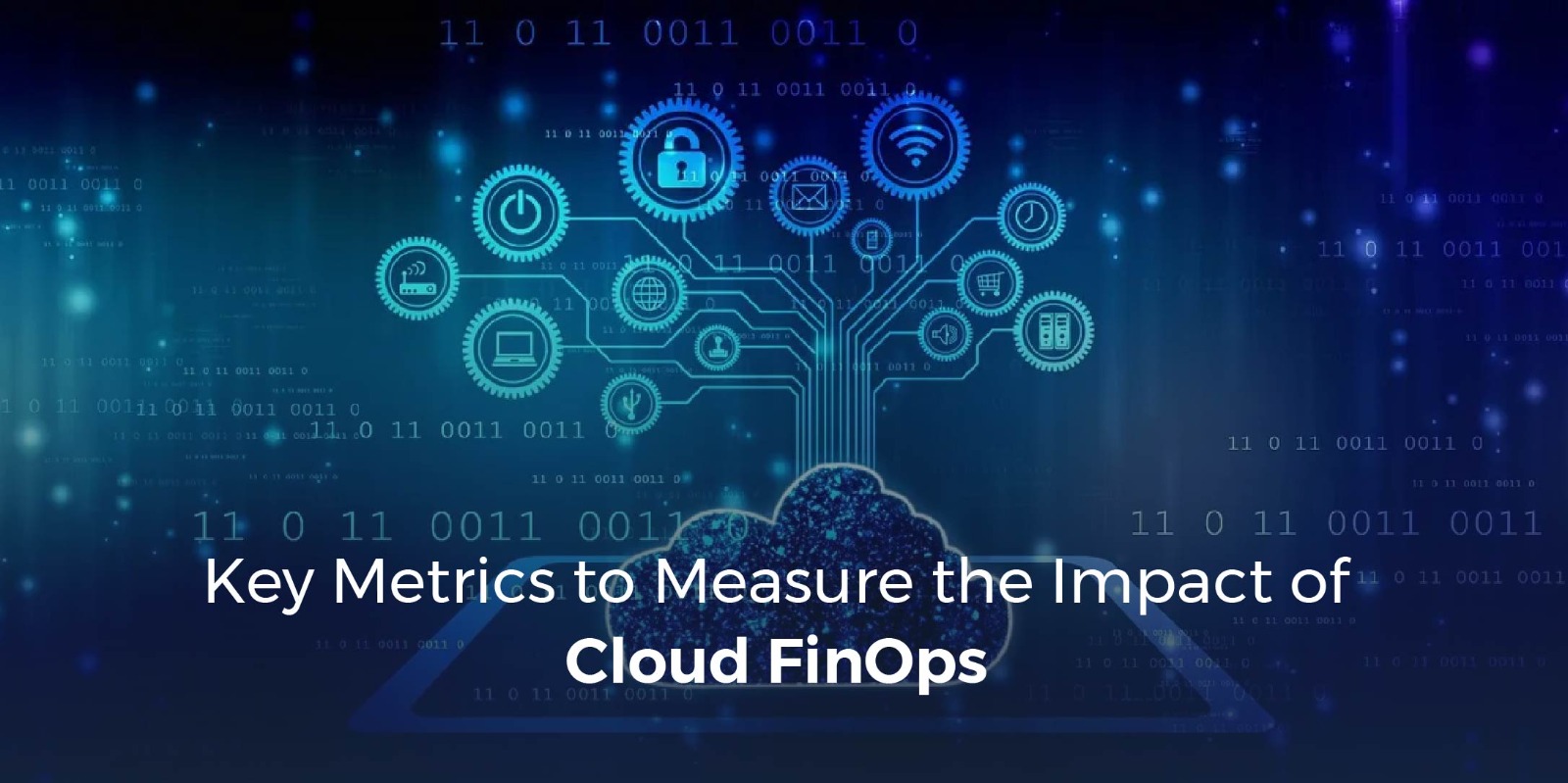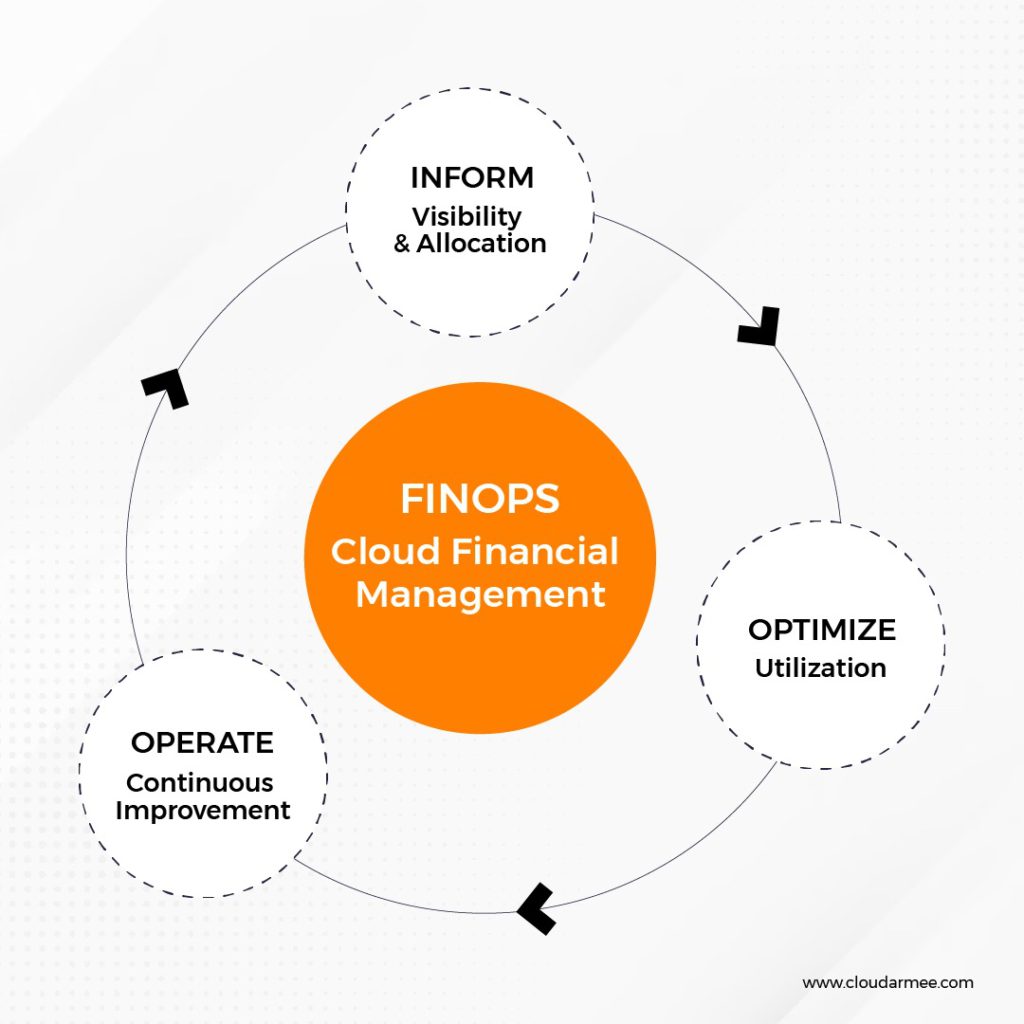
According to a study by the FinOps Foundation, only 13% of the respondents have a mature FinOps program. Cloud FinOps is the strategic solution that bridges this gap, offering a comprehensive framework to optimize cloud spending while maintaining the agility and scalability the cloud provides. This transformative discipline combines financial accountability, cloud resource optimization, and continuous monitoring, driven by data-driven decisions, enabling businesses to navigate the complexities of cloud economics effectively.
In the realm of FinOps (financial operations), the focus is on controlling operational costs within a cloud environment. This discipline plays a vital role in assisting cross-functional teams within an organization in maintaining financial accountability for their cloud service usage.

One of the cornerstones of effective FinOps is the use of key performance indicators (KPIs). These KPIs serve as essential tools for establishing measurable benchmarks and metrics, enabling the comprehensive monitoring of cloud resources and their consumption. Essentially, KPIs provide the visibility and metrics required to initiate the cost-control process, facilitating data-driven decision-making.
Due to the diverse billing methods in cloud services, organizations must regularly measure the value of their investments. Metrics and KPIs are fundamental tools that help translate cloud costs into meaningful business value indicators, addressing both operational and strategic outcomes.
KPIs are invaluable for setting and measuring targets, providing crucial information, tracking operational metrics, and analyzing patterns. They offer real-time data, helping organizations make methodical adjustments and improve performance.
This is one of the most straightforward methods of measuring cloud costs. It involves evaluating the charges recorded in your monthly cloud vendor invoice. This should encompass any customized pricing arrangements, an aspect occasionally absent from billing exports. The invoice cost is notably affected by commitments like Reserved Instances (RIs) and Savings Plans (SPs) for which upfront payments have been made. For instance, a virtual machine (VM) fully covered by upfront RIs for an entire month will show an invoice cost of $0. Conversely, a substantial upfront commitment purchased towards the end of the month would result in a substantial invoice cost, even if the resources haven’t been significantly consumed yet. While crucial for cash-flow management and the IT finance team, this metric might not accurately represent the actual cost of cloud operations. As such, it is not commonly employed for showback or chargeback purposes.
This method involves calculating the cost of the cloud resources consumed over a defined timeframe, often a month. Custom pricing agreements are typically considered, unless they are not passed on to end-users. The key distinction here is how commitments are factored in. To determine the consumed cost, it is necessary to allocate the complete cost of consumed commitments to the specific resources and the time they were utilized. For example, if a VM utilizes a specific RI (or multiple RIs and SPs) during the month, the total cost of that VM includes the precise amount of the commitment(s) it consumed, in addition to any on-demand charges incurred when the VM wasn’t covered. This approach not only provides a more accurate insight into the underlying cost trends but is also suitable for showback or chargeback purposes, making it a true representation of cloud expenses.
Given the multitude of discounts and commitments that continually impact cloud usage rates, it can be beneficial to establish an unaltered “list cost” metric. This metric ensures consistency in cloud pricing for delivery teams and engineers who may not have influence over discounts or commitment coverage. It aids in financial planning and evaluates the impact of efficiency initiatives while facilitating cost savings quantification across the organization for the FinOps team or Cloud Center of Excellence (CCoE).
KPIs are integral to the FinOps approach, providing the metrics and benchmarks needed to monitor, optimize, and control cloud resource usage effectively. By leveraging data-driven decisions and continuous improvement, KPIs empower organizations to enhance efficiency, reduce costs, and maintain their financial health in a cloud-centric world. As a cloud-agnostic solutions provider, CloudArmee offers businesses a powerful means to optimize their cloud costs. By leveraging a deep understanding of various cloud platforms, CloudArmee assists organizations in identifying inefficiencies, right-sizing resources, and implementing cost-effective strategies tailored to their specific needs.